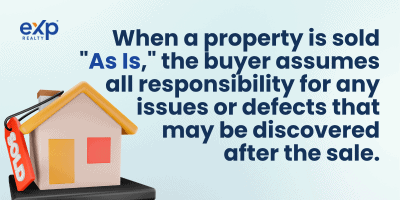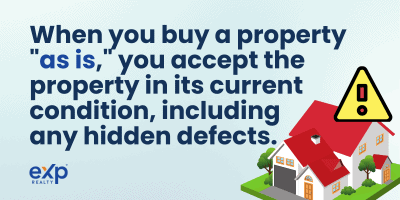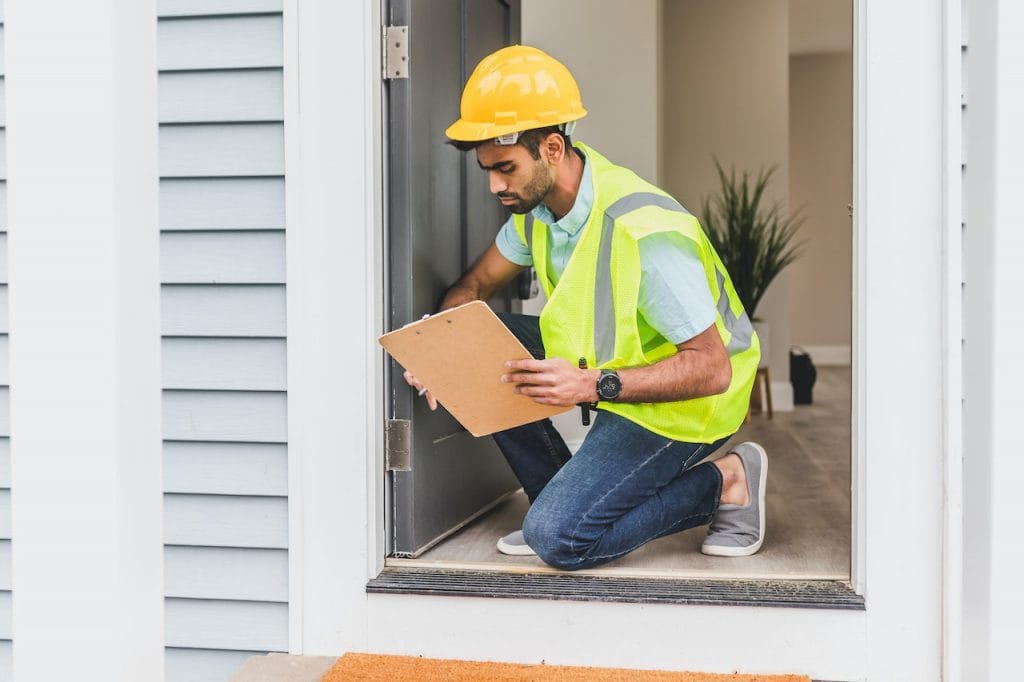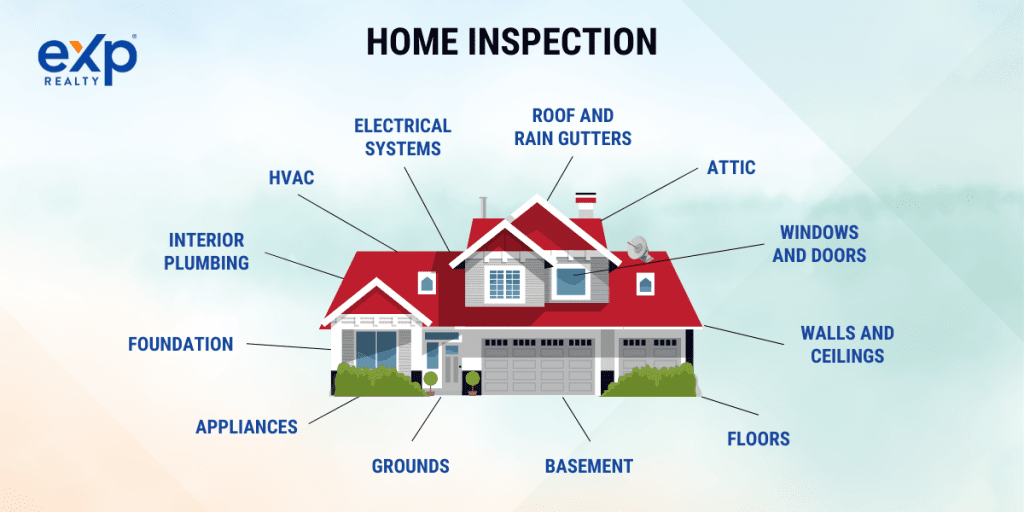Are you considering purchasing a property “as is”? Understanding what this term means and the associated risks can be critical to your success. In real estate, an “as is” purchase typically involves buying a property without any warranties or guarantees from the seller about its condition.
Knowing how to evaluate an as is property, financing it, understanding its benefits, and tips for successfully navigating such purchases are all essential components. This guide will help you understand the term and what you need to know before buying or selling a home.
What Is “As Is” in the Context of Real Estate?

The expression “As Is” is a phrase commonly utilized in real estate, referring to a property’s state without any fixes or renovations from the seller. This means that the seller is not responsible for any repairs or renovations.
When a property is sold “As Is,” the buyer assumes all responsibility for any issues or defects that may be discovered after the sale. This includes any hidden defects the seller or the real estate agent does not disclose.
Buying real property “As Is” is not for the faint of heart and requires careful consideration. Failing to recognize the potential pitfalls of such transactions could leave one high and dry when costly repair bills come knocking.
It’s important to note that “As Is” does not necessarily mean that the property is in poor condition or that significant issues must be addressed. It simply means that the property is being sold without guarantees or warranties and that the buyer assumes all risks associated with the purchase.
Advantages and Disadvantages of Buying “As Is”
Buying a property “As Is” has both advantages and disadvantages. Let’s take a closer look at some of them:
Advantages of Buying “As Is”

Properties listed “as is” are typically priced lower than comparable properties in better condition. This can allow buyers to purchase real property at a lower price and potentially build equity by making improvements and repairs over time.
Since the seller is not making any repairs or improvements, the closing process can be faster and more streamlined. As a result, there may be less negotiation involved in the sale, which can make the process smoother and more straightforward. This can benefit buyers who need to move quickly, such as investors or those in a competitive real estate market.
Buying a property “as is” can also give buyers more flexibility in how they want to approach repairs and improvements. They can prioritize and work on the essential repairs at their own pace.
Disadvantages of Buying “As Is”

When you buy a property “as is,” you accept the property in its current condition, including any hidden defects or problems that may not be immediately apparent. While the initial purchase price may be lower, the cost of repairs or renovations could be significantly higher than anticipated.
The defects could include foundation, roof, plumbing, or electrical systems issues. It could result in unexpected expenses and may ultimately make the purchase more expensive than if you had bought a property in better condition.
Having financing options available is essential for any real estate transaction. Without them, it would be difficult for many people to purchase an inexpensive home or commercial space outright in cash. With mortgage loans or other types of financing available, sellers have more opportunities to attract interested buyers.
However, lenders may hesitate to approve a mortgage for a property sold “as is” as they may see it as a higher risk. The mortgage lender may require certain repairs or renovations completed before approving the loan. This could make it more difficult to secure financing or result in higher interest rates.
Advantages and Disadvantages of Selling “As Is”
Selling investment property “As Is” also has its own set of advantages and disadvantages. Let’s take a closer look at some of them:
Advantages of Selling “As Is”
Selling a property “As Is” can save a significant amount of time, as the seller is not required to make any repairs or renovations before listing the property for sale. This is particularly beneficial for sellers looking to sell quickly or does not have the time to make repairs.
The agreement can also save money, as the seller is not responsible for any repairs or renovations. It can be particularly advantageous for sellers who may not have the financial resources to make significant repairs or upgrades to the property.
By selling a property “As Is,” the seller effectively transfers all liability for any defects or issues with the property to the buyer. This transaction can be beneficial for sellers who may be concerned about potential legal issues or lawsuits related to the property’s condition.
Selling a property “As Is” can also be an honest and transparent approach to the sale. It can attract real estate investors looking for properties that need work and are priced accordingly. These investors may be more willing to make an offer on a property being sold “As Is” and may be able to see the potential in a property that others may overlook.
Disadvantages of Selling “As Is”
Prospective buyers who are willing to purchase a product or property “as is” are typically those who are willing and able to invest time and money into fixing any issues that arise. This can limit the potential buyer pool, as some may not have the resources or desire to undertake such a project.
Property being sold “As Is” may also receive lower offers from potential buyers, as they are assuming all of the risk and potential costs associated with the property’s condition. This can result in a lower sale price for the seller.
A potential buyer will likely conduct a thorough home inspection before purchasing a property. They may require more time to conduct due diligence on the product or property before committing to a purchase resulting in delays.
“As Is” and the Inspection Process

When buying an “As Is” property, the inspection process is an essential step to determine the condition of the property and any potential issues or defects. It is typically the same as for a property not being sold “As Is.”
The first step in the “As Is” inspection process is to hire a professional inspector. The inspector should be experienced and knowledgeable in inspecting the type of property being purchased.
Buyers should approach the inspection process when buying “As Is” cautiously. Since the seller is not required to make any repairs or upgrades, the buyer must carefully consider any potential issues or defects and factor them into their purchasing decision.
Buyers need to be present during the inspection process and ask the inspector any questions they may have. This will help the buyer fully understand the condition of the property and any potential issues or defects.
Buyers should also consider hiring additional specialists, such as a plumber or electrician. These professionals can conduct a more thorough inspection of specific systems or areas of the property.
What Happens At the Inspection?

The inspector will conduct a thorough inspection of the property, checking for any issues or defects with the property, including structural, electrical, plumbing, and HVAC systems. They may also assess the roof, walls, windows, and doors. During the process, the inspector will look for any damage or wear and tear signs and evaluate the property’s overall condition.
After the inspection, the inspector will provide a detailed report outlining any issues or defects found during the inspection. Buyers should review this report carefully and ask the inspector to explain any areas of concern in more detail.
Based on the inspection report, buyers should consider any repair costs associated with the property. This can help buyers make informed decisions about the purchase price and whether they are willing to proceed.
If the inspection report reveals significant issues or defects with the property, buyers may be able to negotiate with the seller. This may involve requesting that the seller make necessary repairs or upgrades before closing or negotiating a lower purchase price to account for any necessary repairs or upgrades.
Based on the inspection report and any negotiations with the seller, buyers must decide whether they are comfortable with the purchase. If buyers are uncomfortable with the property’s condition, they may walk away from the purchase.
It’s important to remember that even with a thorough inspection, some issues or defects may not be apparent until after the buyer has taken possession of the property. Therefore, factoring in inspection contingencies and budget for unexpected repairs or upgrades is essential.
“As Is” and Closing
Reviewing and understanding any “As Is” clause in the contract before closing is essential for buyers when purchasing a property being sold “As Is.” The “As Is” clause is a statement in the contract that specifies that the buyer is purchasing the property in its current condition without any warranties or representations from the seller regarding the state of the property.
This clause is significant because it shifts the responsibility for any defects or issues with the property from the seller to the buyer. By agreeing to the “As Is” clause, the buyer is essentially accepting the property in its current condition, including any defects or issues that may exist.
Therefore, buyers must review and understand the contract’s “As Is” clause before closing. Buyers should ensure that they fully understand the implications of this clause and are comfortable with the property’s condition before signing the contract.
Buyers will comprehend the property condition they purchase by understanding the “As Is” clause. This can help buyers make informed decisions and avoid potential surprises or issues with their purchase.
Understanding the “As Is” clause can allow buyers to negotiate with the seller before closing. It can also help buyers be aware of any potential costs associated with repairing or upgrading the property after closing. Buyers can budget accordingly and avoid any financial surprises by understanding these costs upfront.
In Summary
Understanding “As Is” in real estate is crucial for buyers and sellers. It is essential to know the advantages and disadvantages of buying or selling a property “As Is,” as well as the inspection and closing processes.
Buyers should always hire a professional inspector to conduct a thorough inspection of the property, review the “As Is” clause in the contract before closing, and carefully consider any potential costs associated with repairing or upgrading the property. On the other hand, sellers should disclose any known issues with the property and consider making necessary repairs or upgrades before listing it for sale.
Whether you are a buyer or seller of a property being sold “As Is,” it is essential to seek professional advice and carefully consider the implications of the real estate deal. Doing so lets you make informed decisions and ensure the process runs smoothly.
Fill Out This Form To Have a Skilled Local Real Estate Agent Explain What the Value of Your House Is “As Is”
[showcaseidx_cma]
FAQs
We will answer some of the most frequently asked questions about “as is” in real estate.
What is “as is” in real estate?
In real estate, “as is” refers to a legal term used to describe the condition of a property being sold. When a property is sold “as is,” the seller is selling it in its current state, with no warranty or guarantee regarding its condition, potential issues, or defects.
When a home is sold “as is, “what should I, as a buyer, be worried about?
When buying a home sold “as is,” buyers should be worried about potential issues or defects with the property that may not be immediately apparent.
What is the “as is where basis” clause in real estate and property?
The “as is where is basis” clause is similar to the “as is” clause. This clause specifies that the buyer is purchasing the property in its current condition, with no warranty or guarantee from the seller regarding its condition or potential issues or defects.
What does it mean to sell your home “as is”?
When homeowners sell their home “as is,” they sell the property in its current condition. The buyer will be responsible for any repairs or upgrades necessary after closing.
What are the benefits of selling my house as is?
Selling a house “as is” can provide several benefits for homeowners. It can make the selling process quicker and more straightforward, as the seller does not need to make any repairs or upgrades before listing the property for sale. Additionally, selling “as is” can attract buyers looking for a fixer-upper or investors looking to flip the property for a profit.





